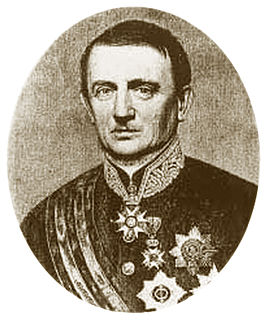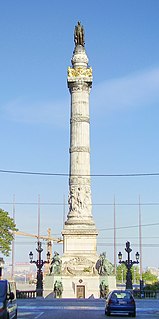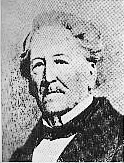Related Research Articles

The French Second Republic, officially the French Republic, was the republican government of France that existed between 1848 and 1852. It was established in February 1848, with the Revolution that overthrew the July Monarchy, and ended in December 1852, after the 1851 coup d'état and when president Louis-Napoléon Bonaparte proclaimed himself Emperor Napoleon III and initiated the Second French Empire. It officially adopted the motto of the First Republic, Liberté, Égalité, Fraternité.

The Chamber of Deputies, abbreviated to the Chamber, is the unicameral national legislature of Luxembourg. Krautmaart is sometimes used as a metonym for the Chamber, after the square on which the Hôtel de la Chambre is located.
Charles-Mathias Simons was a Luxembourg politician and jurist. He was the third Prime Minister of Luxembourg, serving for seven years, from 1853 until 1860.

Baron Victor de Tornaco was a Luxembourg politician. An Orangist, he was the fourth Prime Minister of Luxembourg, serving for seven years, from 26 September 1860 until 3 December 1867.
Charles-Gérard Eyschen was a Luxembourgish politician and jurist. An Orangist, Eyschen served in the cabinet of Charles-Mathias Simons as Director-General for Justice.

The National Congress was a temporary legislative assembly in Belgium, convened in 1830 in the aftermath of the Belgian Revolution. Its purpose was to devise a national constitution for the new state, whose independence had been proclaimed on 4 October 1830 by the self-declared Provisional Government.
François-Xavier Wurth-Paquet was a Luxembourgian politician, jurist, and archaeologist.

Luxembourg City Hall is the city hall of Luxembourg City, in southern Luxembourg. The city hall is the centre of local government, including being used as the private office of the Mayor of Luxembourg City. Due to its position in Luxembourg's capital, it also regularly plays host to foreign dignitaries. It is located on the southwestern part of Place Guillaume II, the main square in the centre of the city.
Vendelin Jurion was a Luxembourgish politician and jurist.
Jean-Joseph Norbert Metz was a Luxembourgish politician and engineer. With his two brothers, members of the powerful Metz family, Charles and Auguste, Metz defined political and economic life in Luxembourg in the mid-nineteenth century.
Jean-Antoine Auguste Metz was a Luxembourgian entrepreneur, politician, and lawyer. He was a major player in the growing steel industry in Luxembourg during the nineteenth century, as well as a leading liberal member of the Chamber of Deputies, along with his brothers.
The Constituent Assembly of Luxembourg was a constituent assembly called in 1848 in Luxembourg to write and pass a new national constitution.
Théodore Pescatore was a Luxembourgian politician. One of the most important liberals in the mid-19th century, he was president of the Constituent Assembly that wrote Luxembourg's Constitution in 1848. He later held the position of President of the Chamber of Deputies for two years.
Pierre-Ernest Dams was a Luxembourgish politician, judge, and journalist. He was a major figure in the formative years of Luxembourg as an independent country.
Jean Ulveling was a Luxembourgian statesman, politician, and historian. He served as a member of the Council of State of Luxembourg for some years, and was a member of the Constituent Assembly which framed a new constitution in 1848. From 1854 to 1856 he represented the canton of Wiltz in the Chamber of Deputies.
The French demonstration of 15 May 1848 was an event played out, mostly, in the streets of Paris. It was intended to reverse the results of a Second Republic election of deputies to the Constituent Assembly. It is difficult to say, with any precision, whether this phenomenon should be called a demonstration, a riot, an invasion, an rebellion, or an attempted coup d'état. Nonetheless, it seems to have been largely unplanned, not particularly bloody, and indisputably a failure.

The Fontaine Ministry formed the government of Luxembourg from 1 August 1848 to 2 December 1848.
The Assembly of Estates was the legislature of Luxembourg from 1841 to 1848, and again from 1856 to 1868.
The Revolution of 1848 in Luxembourg was part of the revolutionary wave which occurred across Europe in 1848. The Grand-Duchy of Luxembourg at that time was in personal union with the Kingdom of the Netherlands.
National Constituent Assembly may refer to:
References
- (in French and German) "Mémorial A, 1848, No. 38" (PDF). Service central de législation. Retrieved 2009-09-05.